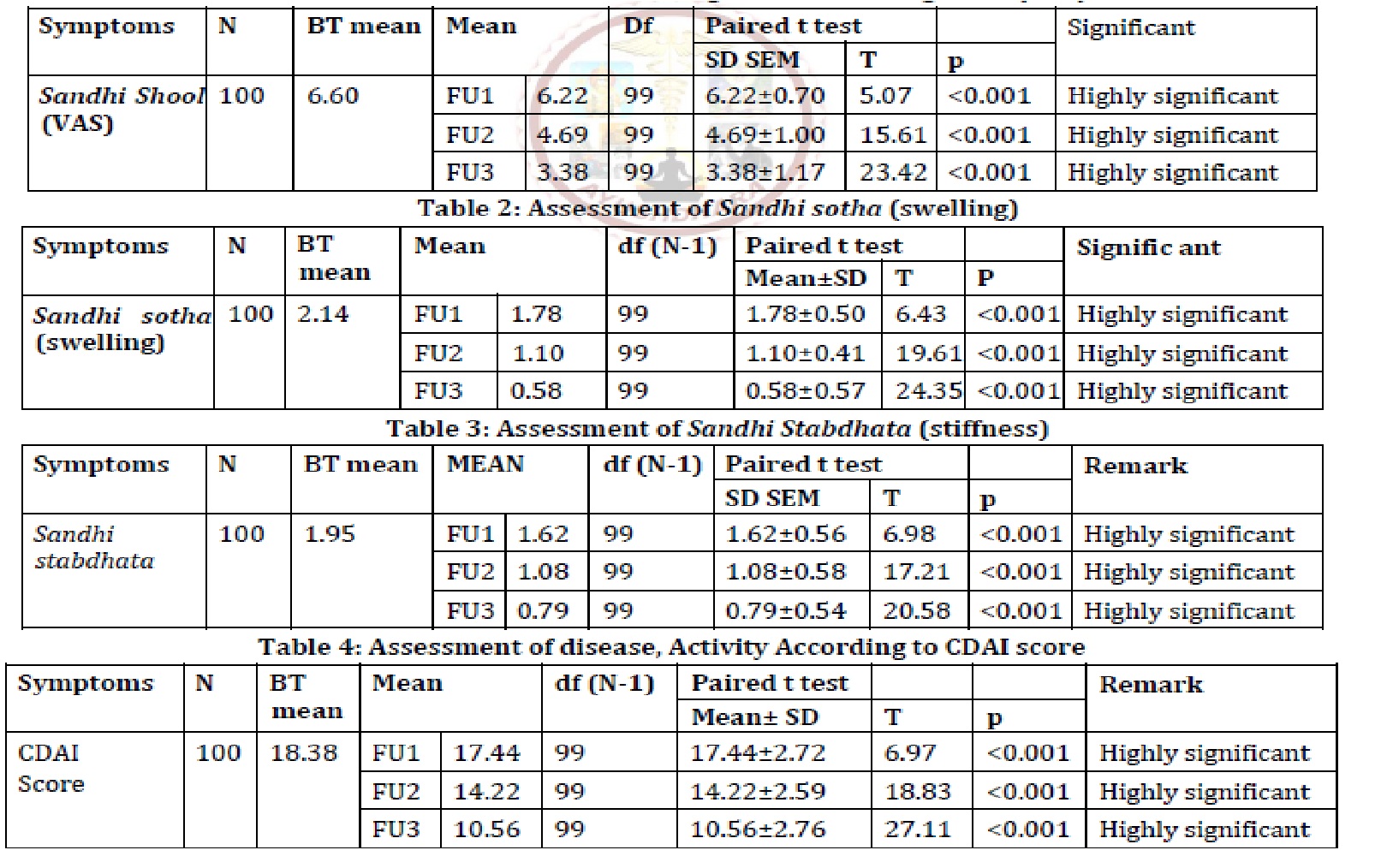Evaluate the Efficacy of Kshara Basti and Sunthi-Guduchi Churna in Amavata (Rheumatoid Arthritis)- A Clinical Study
DOI:
https://doi.org/10.47070/ayushdhara.v9i4.998Keywords:
Amavata, Rheumatoid Arthritis, Kshara Basti, Sunthi guduchi churna, CDAI score, gut brainAbstract
Amavata is a Rasa Pradosaja Vikara with two major pathogenic factors Ama and Vata, which mainly affect Sandhi followed by Asthi and Majja. The symptoms of Amavata are identical to Rheumatoid Arthritis, a chronic inflammatory polyarthritis affecting multiple systems. The symptoms of Amavata are identical to rheumatism, which include rheumatoid arthritis and rheumatic fever. It is observed that rheumatism is an autoimmune disorder, which is among the collagen disorders having strong and significant parlance with Amavata. Various drug trials were already carried out on Amavata, yet there is a lacuna in the management of Amavata. Hence, in the present clinical study, 100 patients were selected for Open Random trial and applied Kshara basti followed by oral Sunthi- Guduchi churna for 2 month for the management of Amavata. In disease active stage of Amavata synovial stromal-immune cell interactions lead to reciprocal metabolic changes that again potentiate the inflammatory response. Here we can understand the metabolic and cellular pathology during active stage of disease. Hence, metabolic reprogramming could represent a new therapeutic strategy for patients with RA, where our Basti therapy followed by Rasayana must have a great role. For the study collected data was distributed according to age, sex and Prakruti, and a paired t-test was applied for the clinical assessment of the subjective and objective parameters of Kshara basti followed by Sunthi guduchi churna in Amavata management and it has shown significant reduction in the Sandhi shool according to VAS scale (t >23.42 at the 0.001% level), Sandhi sotha (t >24.35 , at the 0.001% level), Sandhi Stabdhata (t >20.58 at the 0.001% level), CDAI score (t >27.11 at the 0.001% level ) ANA score (t >53.23, at the 0.001% level), and for 1st 15 days ESR changes is not significant at t <1.00 but after completion of treatment significant results was observed. By analysing statistical data with paired t test it reveals that 58% had major improvement followed by 37% had minor improvement and 5% of patients who had no improvement.
Downloads

Downloads
Published
Issue
Section
License
Copyright (c) 2022 AYUSHDHARA

This work is licensed under a Creative Commons Attribution-NonCommercial-ShareAlike 4.0 International License.


